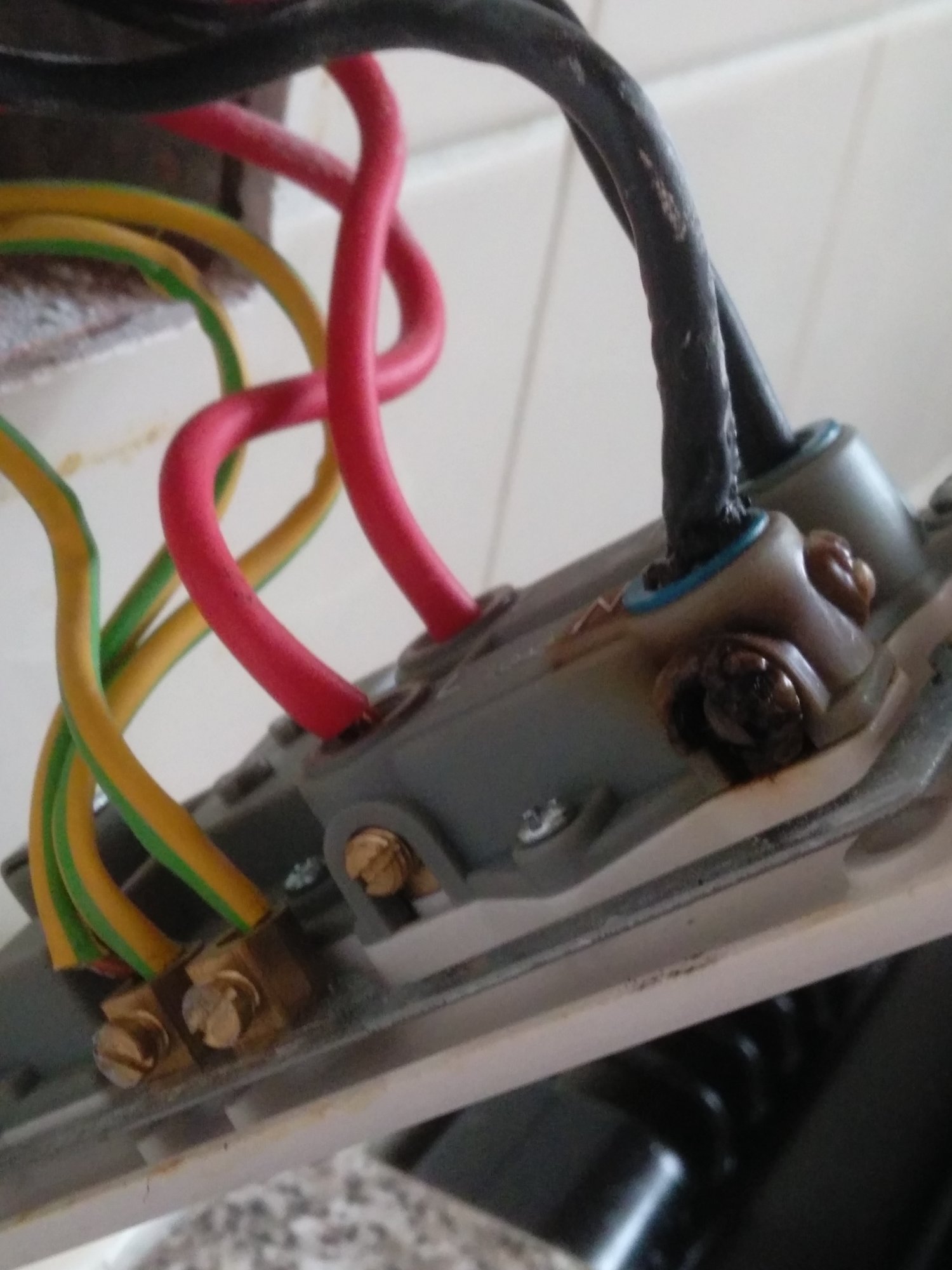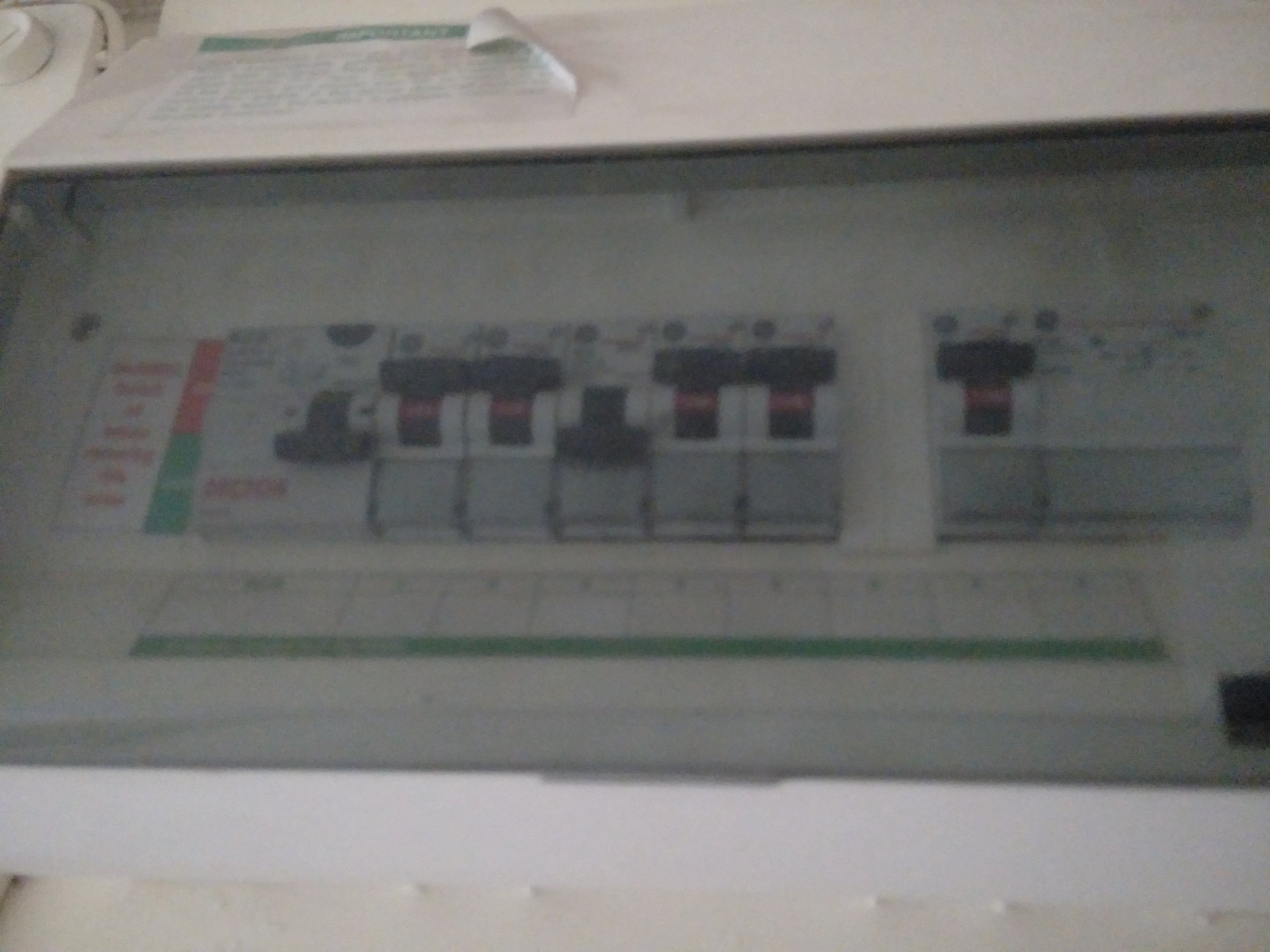- Joined
- 26 Mar 2016
- Messages
- 10
- Reaction score
- 0
- Country

Hi there, first off I'd like to say I'm not an electrician but have very limited knowledge. We've an electrician coming but I have a query that i'd like some advice on.
Anyways I have an electrical ceramic top cooker. Yesterday whilst cooking, it started to cut out and we noticed the isolation switch was nearing too hot to touch. We left it cool down and have come back to it today. We turned the cooker on low in order to find the breaker in the fuse box and turned it off. We tried a few before we eventually found the one specifically for the cooker, We then removed the wall socket and the neutral wire from the fuse box has melted into the terminal. After some research I can see this isn't uncommon and could be an easy enough fix with a new isolator switch with re wiring/insulating but was put off doing it myself which brings me to my query.
Even with the fuse turned off, the isolator socket was still receiving power, not enough to turn the oven on or the radio in the same socket, but enough to make the LED on the electric testing screw driver come on VERY brightly, not just a trickle. We figured maybe some electricity was still lingering in the circuit so we left it for 30 mins. Tested with the screwdriver again and still showed power just as bright before. Returned to the breaker box and turned the master breaker off (all the power to the home), went back to the socket and it had no electrical presence...
How can it still be getting electricity when its breaker is set to off?
I understand the principles of the fuses operating on "rings" and I understand the cooker is one of its own, so this has me puzzled?!?!?!
As I said we've got an electrician coming out but i'm afraid he'll just think replacing the switch is all fine and dandy when really it looks like an electrical fault of somesort to me which has melted that wire (too much power???)
Has anyone come across anything like this? Pictures to follow
Thanks for reading, hope you can help
Anyways I have an electrical ceramic top cooker. Yesterday whilst cooking, it started to cut out and we noticed the isolation switch was nearing too hot to touch. We left it cool down and have come back to it today. We turned the cooker on low in order to find the breaker in the fuse box and turned it off. We tried a few before we eventually found the one specifically for the cooker, We then removed the wall socket and the neutral wire from the fuse box has melted into the terminal. After some research I can see this isn't uncommon and could be an easy enough fix with a new isolator switch with re wiring/insulating but was put off doing it myself which brings me to my query.
Even with the fuse turned off, the isolator socket was still receiving power, not enough to turn the oven on or the radio in the same socket, but enough to make the LED on the electric testing screw driver come on VERY brightly, not just a trickle. We figured maybe some electricity was still lingering in the circuit so we left it for 30 mins. Tested with the screwdriver again and still showed power just as bright before. Returned to the breaker box and turned the master breaker off (all the power to the home), went back to the socket and it had no electrical presence...
How can it still be getting electricity when its breaker is set to off?
I understand the principles of the fuses operating on "rings" and I understand the cooker is one of its own, so this has me puzzled?!?!?!
As I said we've got an electrician coming out but i'm afraid he'll just think replacing the switch is all fine and dandy when really it looks like an electrical fault of somesort to me which has melted that wire (too much power???)
Has anyone come across anything like this? Pictures to follow
Thanks for reading, hope you can help


